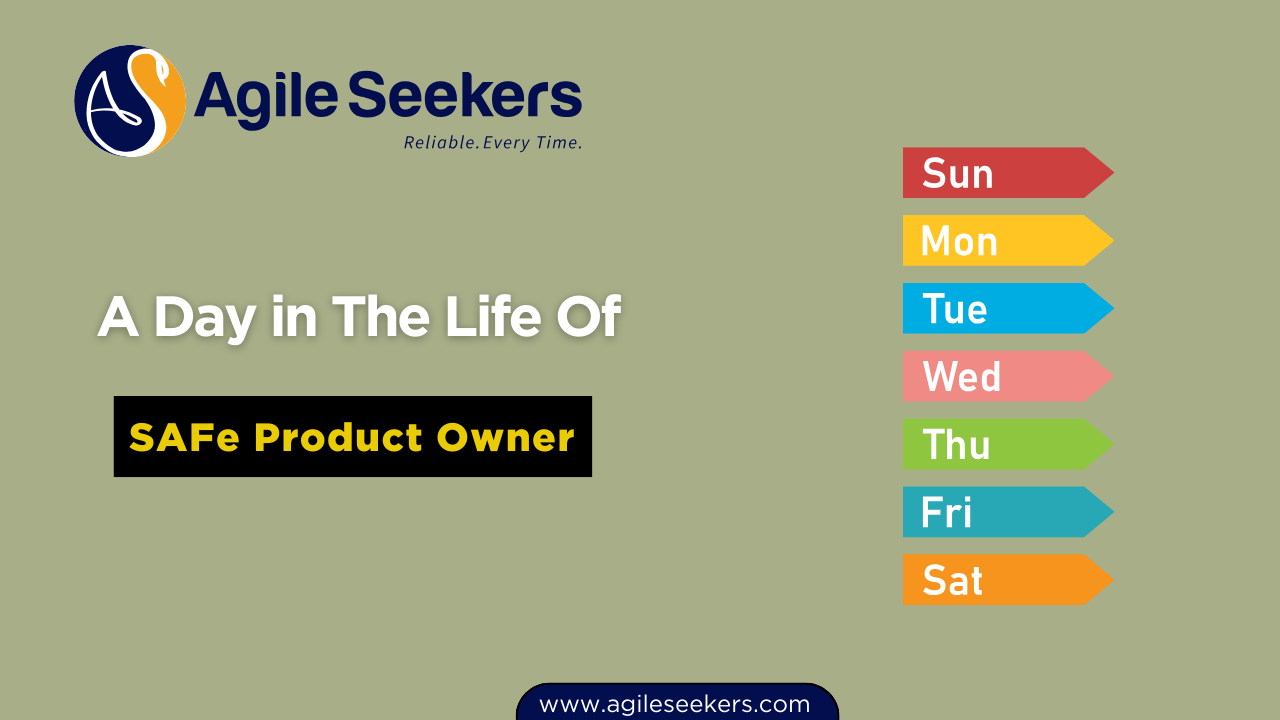Day in the Life of a Certified SAFe Product Owner/Product Manager

The role of a Certified SAFe Product Owner/Product Manager (POPM) is fast-paced, engaging, and deeply connected to the value delivery process in an enterprise Agile setup. These professionals act as a critical bridge between customer needs, business goals, and Agile teams. Every day, they balance strategic planning with hands-on collaboration to ensure the right work is getting done at the right time.
Let’s walk through a typical day in the life of a Certified SAFe Product Owner/Product Manager to understand how they drive outcomes and keep Agile Release Trains on track.
8:30 AM – Morning Routine and Alignment
The day begins with reviewing priorities. Before stepping into meetings, the POPM checks the team’s progress, looks at key features in the backlog, and scans emails or messages from stakeholders and developers.
They check for any dependencies or blockers that surfaced overnight. A quick touchpoint with the Release Train Engineer (RTE) or Scrum Masters helps bring immediate issues into focus. This early prep sets the tone for a productive day ahead.
9:15 AM – ART Sync: Connecting the Dots
In a scaled Agile environment, coordination is everything. The POPM joins the ART Sync—also called the Scrum of Scrums—which includes other POPMs and Scrum Masters from the train. The goal is to align on progress, risks, and cross-team dependencies.
This meeting isn’t just about status updates. It’s a time to raise flags, clear bottlenecks, and ensure the teams are collectively moving toward the Program Increment (PI) objectives.
10:00 AM – Team Stand-Up and Backlog Grooming
At the team’s daily stand-up, the POPM listens closely to what’s happening on the ground. They step in to clarify requirements, answer questions, and reaffirm priorities. It’s short, sharp, and focused.
Afterwards, the POPM may host a backlog refinement session. Here, they break down features into user stories, fine-tune acceptance criteria, and ensure upcoming work is sized, prioritized, and ready to go. The backlog isn’t just a list—it’s a living, evolving reflection of business priorities.
11:30 AM – Stakeholder Sync and Customer Voice
Late morning is usually dedicated to stakeholder engagement. This might include a meeting with business owners, portfolio managers, or even customers. The POPM shares updates, demonstrates progress, and gathers feedback.
These conversations are key to keeping the product aligned with customer needs. It’s not just about building features—it’s about building the right features. The POPM uses this input to adjust roadmaps and make informed trade-offs.
For professionals who want to build this skillset, the SAFe POPM Certification provides practical tools for managing stakeholder relationships and prioritizing customer value.
1:00 PM – Roadmap Planning and Strategic Focus
After a break, attention shifts to strategy. The POPM reviews the product roadmap and adjusts priorities based on market changes or internal feedback. They collaborate with Product Managers and other POPMs to ensure feature delivery aligns with broader business goals.
They might evaluate features using WSJF (Weighted Shortest Job First) to decide what gets built next. This is where the balance between business value, technical feasibility, and customer needs comes into play.
If you’re stepping into this role, the SAFe Product Owner Certification equips you with the frameworks to make these complex decisions with confidence.
2:30 PM – PI Planning Prep and Feature Shaping
As the next PI approaches, the POPM spends time preparing for the upcoming planning session. This includes reviewing upcoming features, coordinating with architects and UX teams, and aligning on enablers that support future development.
They also revisit PI objectives to ensure they’re still relevant and realistic. Dependencies between teams are reviewed, and the POPM makes sure stories are ready for the team to commit during the next PI Planning session.
This is where the value of structured SAFe Product Owner/Manager certification becomes clear. It helps professionals lead PI planning with clarity and structure, instead of guesswork.
4:00 PM – Supporting the Team and Closing Gaps
In the afternoon, the POPM reconnects with the team to clarify open questions or work through blockers. They might join a pairing session with a developer, review a demo, or collaborate with testers to refine a story’s acceptance criteria.
This hands-on support helps the team stay unblocked and focused. The POPM’s presence ensures there’s no gap between what the business expects and what the team delivers.
5:00 PM – Wrap-Up and Planning Ahead
The last hour of the day is for review and preparation. The POPM updates dashboards, responds to key emails, and ensures backlog items are ready for the next day. They reflect on what went well, what needs attention, and what to prioritize next.
This consistent rhythm—balancing strategic oversight with daily execution—is what makes the POPM role so impactful in a SAFe environment.
If you’re considering a move into this role, check out the upcoming SAFe POPM training at AgileSeekers. It’s a hands-on program that prepares you for real-world success as a Product Owner/Product Manager in a scaled Agile setup.
Final Thoughts
A day in the life of a Certified SAFe Product Owner/Product Manager is filled with collaboration, prioritization, and decision-making. They’re responsible for turning business strategy into actionable work, and guiding Agile teams toward delivering the most valuable outcomes.
This isn’t a role you step into casually—it requires the right mindset, tools, and training. With the support of a strong framework and the right certification, you can confidently lead teams, align stakeholders, and drive continuous value in any enterprise setting.
Ready to take the next step? Learn more about the SAFe POPM Certification and start building the career you’ve envisioned.




















